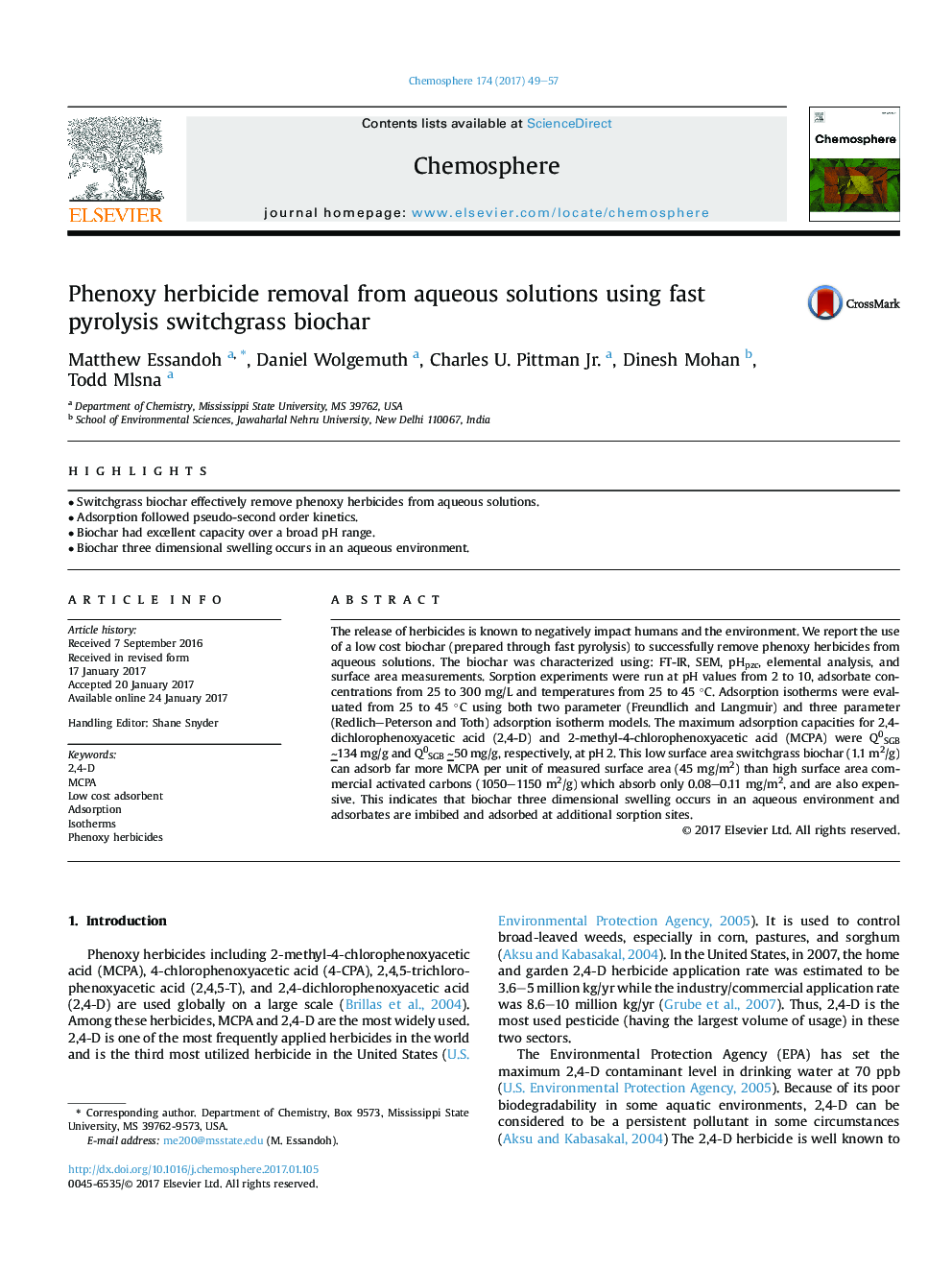| Article ID | Journal | Published Year | Pages | File Type |
|---|---|---|---|---|
| 5747342 | Chemosphere | 2017 | 9 Pages |
â¢Switchgrass biochar effectively remove phenoxy herbicides from aqueous solutions.â¢Adsorption followed pseudo-second order kinetics.â¢Biochar had excellent capacity over a broad pH range.â¢Biochar three dimensional swelling occurs in an aqueous environment.
The release of herbicides is known to negatively impact humans and the environment. We report the use of a low cost biochar (prepared through fast pyrolysis) to successfully remove phenoxy herbicides from aqueous solutions. The biochar was characterized using: FT-IR, SEM, pHpzc, elemental analysis, and surface area measurements. Sorption experiments were run at pH values from 2 to 10, adsorbate concentrations from 25 to 300 mg/L and temperatures from 25 to 45 °C. Adsorption isotherms were evaluated from 25 to 45 °C using both two parameter (Freundlich and Langmuir) and three parameter (Redlich-Peterson and Toth) adsorption isotherm models. The maximum adsorption capacities for 2,4-dichlorophenoxyacetic acid (2,4-D) and 2-methyl-4-chlorophenoxyacetic acid (MCPA) were Q0SGBâ¼134 mg/g and Q0SGBâ¼50 mg/g, respectively, at pH 2. This low surface area switchgrass biochar (1.1 m2/g) can adsorb far more MCPA per unit of measured surface area (45 mg/m2) than high surface area commercial activated carbons (1050-1150 m2/g) which absorb only 0.08-0.11 mg/m2, and are also expensive. This indicates that biochar three dimensional swelling occurs in an aqueous environment and adsorbates are imbibed and adsorbed at additional sorption sites.
